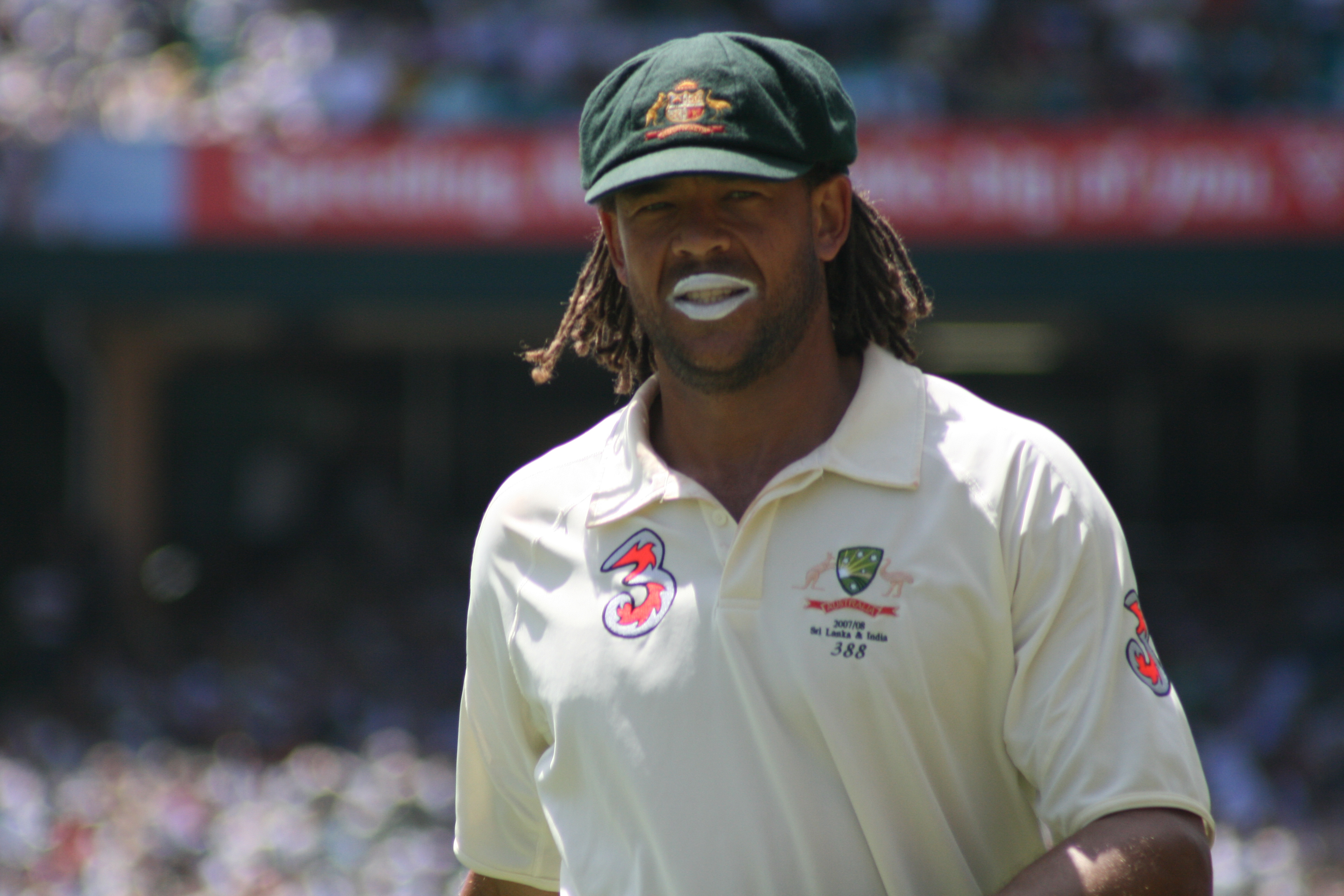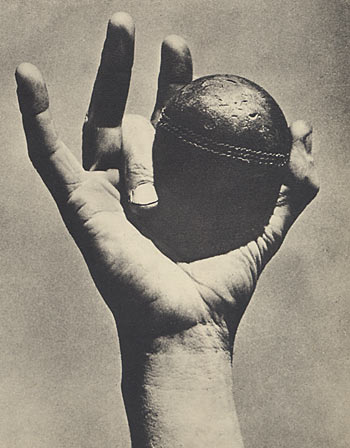 Pursuant to the previous blog post, I have gone through more thoroughly and spotted the following errors in the Invincibles chapter of Roland Perry's "Miller's Luck" (Keith Miller pictured). It is quite an alarming error rate for 32 pages of prose. What's more terrible is that this fellow has somehow won awards for his cricket books and is regarded as something of a Bradman/Invincibles expert.
Pursuant to the previous blog post, I have gone through more thoroughly and spotted the following errors in the Invincibles chapter of Roland Perry's "Miller's Luck" (Keith Miller pictured). It is quite an alarming error rate for 32 pages of prose. What's more terrible is that this fellow has somehow won awards for his cricket books and is regarded as something of a Bradman/Invincibles expert.I was listening to ABC News Radio in August, on Bradman's centenary, and they did a feature on the celebrations. Usually News Radio will put news wraps on the first 15 minutes of each half hour, with a news anchor reading out and introducing news stories, sports, weather and stock market data, and the second half hour is for more in-depth analysis of the big news, usually 3-4 minute pieces, or a phone hook-up for an expert discussion, usually a professor or a former insider-turned-pundit.
Well, guess who News Radio had for the detailed chat? Roland Perry, a "noted cricket historian", who sounded rather chuffed that the presenter had such a high opinion of him. They also ended up mentioning that Perry's book about the Invincibles was being launched for the centenary, thereby spruiking it, deliberately or otherwise.
The book is a rehash of various previous Perry books, including brief profiles of the players, and accounts of what happened on tour, match descriptions and so forth. In my brief reading of it in the book shop, a lot of it was adapted from Captain Australia, the biographies of Miller and Bradman respectively and the books on Bradman's best ever XI and his best ever Ashes XI, because a lot of Bradman's men were covered by the earlier books, being the greats they are. Nothing wrong with this of course, as he's simply reusing his work, but that virtually guarantees that all the old errors are transplanted.
The ABC could at least have teed up the truly pre-eminent historians such as Gideon Haigh and David Frith, who have appeared on their productions before. Among other things, Frith is known for Bodyline Autopsy and appeared on ABC's television documentary on the same topic, while Haigh is known for a lot of things, and has appeared ABC's Sunday morning sports television show Offsiders. Haigh and Frith recently collaborated on Inside story: unlocking Australian cricket's archives in 2007. It is a fascinating and well-researched story of the political rumblings in Australian cricket administration, and is pieced together from Cricket Australia archives and many other primary sources, including interviews with former board directors, who give their perspective straight from the horse's mouth, including how they argued on certain controversies. Everything from the private dealings over John the bookmaker, the possible conspiracy against Ian Meckiff for throwing, Bodyline, Clem Hill's famous selection-room punch-up with Peter McAlister and Sid Barnes exclusion from the team for "reasons other than cricket", are expanded on to shed more light on how and why the star chamber did what they did. I recommend it to all cricket lovers.
Before listing the errors, I will now quote Gideon Haigh, lest there be no expert reinforcement of my beliefs. Another cricket scholar and cricket museum curator at a Test cricket venue who has written a few very polished books did agree that Perry was poor writer, although I'm the only witness to that.
In "No Ball". Game for anything: Writings on Cricket. Melbourne: Black Inc. ISBN 1 86395 309 4. , Haigh says of Captain Australia – "... Perry maintains a disquieting tendency to, quite casually, mangle information for no particular reason". and "... there are assertions whose origins, are, at least, somewhat elusive" and "Perry depicts [the captains] in the flat, bulking the thin personal matter with ponderous clichés, execrable puns and recitations of scores and averages. There is no original research to speak of, no new insight to relate; there is not even a bibliography".
Frith says: "Unfortunately, Roland Perry's work here is anything but confidence-inspiring. He is an opportunist author, Don Bradman, Shane Warne and Steve Waugh being among his previous subjects, together with a book on Australia's captains which gave the world nothing that the painstaking Ray Robinson had not already dealt with, apart from the update. Two earlier biographies of Miller and his autobiographical jottings have been milked dry, which is fine. But the book is strewn with errors that undermine confidence in the work as a whole. Keith Johnson was not Ian's father; Army cricketer JWA Stephenson was not the beloved colonel who became MCC secretary; when Cyril Washbrook took a run after being hit on the head it was not a "bye"; George Tribe was not a "legspinner" and Alf Gover was not a "medium-pacer"; Wally Hammond was not dropped for the final Test of 1946-47 (he had fibrositis)."
Right, now to the action. These claims can all be debunked simply by looking up the schedule and statistics. There might be more errors in the peripheral information about his public meetings and dinners with Princess Margaret among others.
*p. 222. That the Australians arrived in "early April". Unless April 16, in the second half of the month is "early", then he's made a mistake.
*p. 223. Says that Barnes, Brown, Morris, Bradman, Hassett, Miller and Harvey jostled for five Test spots. Actually, six, as the first six on the list played in the first two Tests. Counting Miller as a frontline batsman, Bradman always used six of them before Tallon/Johnson/Lindwall.
*p. 224. The Worcester Cathedral in the background of the county ground is not 13 centuries old. Christian activity is that old, but the original church was long demolished and the iconic backdrop that cricketlovers are so familiar with dates to the 1200s.
*p. 224. Contrary to Perry's claim, Miller did open the bowling in both innings of the match against Worcestershire.
*p. 224. Miller also did not hit three sixes against Worcs, he hit one. Cricinfo and CricketArchive agree.
*p. 224. Perry says of the next match against Leicestershire: "Batting at three, especially after not bowling in the game". That's because Australia batted first, although Perry's comment is ambiguous.
*p. 224. Perry says Australia played against Yorkshire "next day" after scoring the double ton against Leics. However, Miller finished batting early on day two and the next day was the last day of the match against Leics
*p. 225. Says that Hassett won the toss and put Yorkshire into bat. Actually, Yorkshire won the toss and decided to bat.
*Generally, Perry is often slack with not outs and sometimes doesn't say "not out" after a player's score like Saggers' 104* against Essex, but sometimes does.
*p. 227. He says that the win over Essex was the sixth win in a row in 19 days. Incorrect, as Australia won the first match against Worcs on April 30 and the Essex win came on May 17.
*p. 229. Hutton did not captain the MCC against Australia. Yardley did.
*p. 232. Perry says that Australia slumped to 8/63 against Hampshire in discussing Miller's counterattack. Australia were 5/91 when Miller departed.
*p. 233. Says that Hants took a 77-run first innings lead. No. 195-117=78
*p. 233. Says that Miller and Saggers took a trip to Paris during the match against Sussex because they were not playing. Saggers certainly did not, as he did play in that match.
*p. 234. Says Princess Margaret was 18, when discussing Miller having dinner with her in June. Princess Margaret didn't turn 18 until August.
*p. 235. Says Miller bowled five bouncers in eight balls at Trent Bridge during the Test, in reference to the final over of the day against Hutton. He did not, as in 1948, they used six-ball overs. Hutton glanced the other ball for four.
*p. 238. Says that Miller opened the batting in the second match against Yorkshire. Not so. Brown did and scored 19 and 113, and Perry thinks these were Miller's score. Miller actually scored 20 and 0. A pretty massive mistake to confuse a century with a duck! Furthermore, an incorrect and dubious conclusion is reached from this paragraph, that Miller's long innings as an opener taxed his bowling efforts. Twenty and a duck is not a heavy workload!
*p. 239. Says Hamence bowled Hutton for 10 in the second innings of the said match. He bowled Halliday. Hutton didn't bat in the second innings.
*p. 242. Says that Loxton and Toshack opened the bowling in the first innings of the second tour game against Surrey in 1948. Toshack did not, Hamence did
*p. 243. Mentions a poker match during a rain break in England's first innings in the Third Test involving Miller, Edrich, Compton and Evans. Miller reportedly was late back onto the field as he wanted to continue playing with the others. Well, Edrich came in at 1/22 and when he was out, Compton came in when Edrich was out at 5/119 and batted until the end of the innings. Thus, if Miller was holding up play, it can't have been after England lost their first wicket, as either Edrich or Compton would have been waiting on the ground to bat, not playing poker. But there was no "long rain delay" at the start of England's first innings before the first wicket fell at 1/22. Either he's made another mistake or taken on trust the apocryphal story of an old cricketer with possibly faulty memory without checking to see if it is consistent with the scorecard.
*p. 246. This account of Miller's 58 in the 1948 Headingley Test is adapted from Jack Fingleton's "Brightly Fades The Don". However, Miller did not hit five sixes in this innings, as Perry implies, and mis-adapts Fingleton's account into saying so.
*pp. 248-249. Says that Miller followed his bowling effort against Derby with another against Glamorgan on the next day. Miller's bowling effort against Derby was actually on the second day, so the next day was the final day's play, not the match against Glamorgan.
*p. 250. Dewes fell with the score at 2 in the first innings of the Fifth Test, not 1/1. Appears to have copied this from Jack Fingleton's Brightly Fades The Don, which appears to be incorrect in this case.
*p. 251. Says that Miller scored 2088 runs in the 1948 tour, second only to Bradman. He did not. He scored 1088. What is worse is that Perry uses this erroneous number to reach the conclusion that Miller was the influential player in 1948 after Bradman and Morris, at the end of this chapter.
*p. 253. Says that Bradman only allowed six capped Test players to represent the opposition in the match against Leveson-Gower's XI. Well, Hutton, Edrich, Yardley, Bedser, Evans and Laker played, who were all in the 1948 Tests. But Walter Robins, Freddie Brown, Martin Donnelly and Laurie Fishlock also played, and they were already capped. That's 10. Again it appears that he copied Fingleton's Brightly Fades The Don without checking the scorecard for himself.
*p. 256. Says that Bill Johnston scored 60 runs at 20.66 in the Tests. Nope. 60/3 =20.00. He scored 62 at 62/3=20.66
*p. 255. Says that Miller went to a concert after the final day of the first Scotland match and then told the media at the concert that he was playing against Scotland tomorrow. There were two days of rest between the matches. Either a "sic" should have been added to note that Miller was wrong or the concert wasn't on the last day of the first match.
 Perhaps Fingleton's (pictured) seminal work Brightly Fades The Don also needs to be checked for its accuracy. Certainly Fingleton has a great understanding and feel for the game, and his writing is engaging and charming, like Peter Roebuck in our time, but in some places, the accuracy of the match accounts appears to lacking. Another example is that he says that Sam Loxton made his Test debut at Old Trafford and then took his first wicket at Headingley, but Loxton debuted in the previous summer against India and took wickets in that series. It does seem as though he just wrote from his impressions in some parts of the book.
Perhaps Fingleton's (pictured) seminal work Brightly Fades The Don also needs to be checked for its accuracy. Certainly Fingleton has a great understanding and feel for the game, and his writing is engaging and charming, like Peter Roebuck in our time, but in some places, the accuracy of the match accounts appears to lacking. Another example is that he says that Sam Loxton made his Test debut at Old Trafford and then took his first wicket at Headingley, but Loxton debuted in the previous summer against India and took wickets in that series. It does seem as though he just wrote from his impressions in some parts of the book.The Invincibles deserve to be researched and recorded in history in a manner and with polish befitting their status as one of the greatest cricket teams of all time. Perry's writing does anything but.




